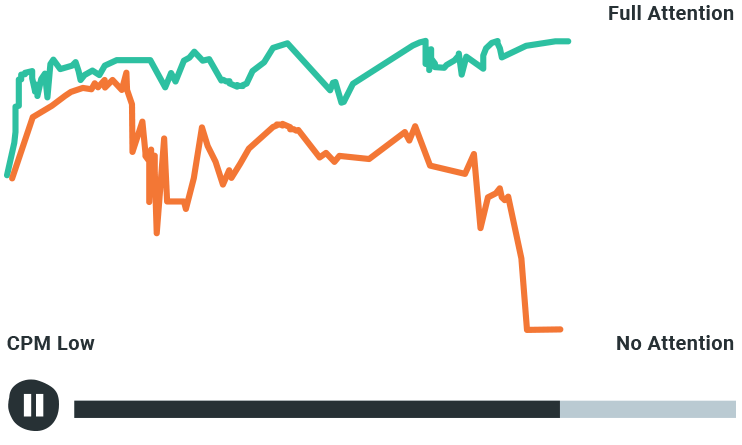
|
Get your CMO Guide to Attention now

|
If attention is an outcome that leads to sales and customer loyalty, then the advertising industry should embrace attention.
But measuring attention is not trivial. And that's why we published our latest report, "The CMO Guide for Measuring and Managing to Attention Outcomes.”
The first chapter in our guide addresses a common attention proxy: Interaction Metrics.
A common way to harness consumer attention is not by directly measuring humans at all, but by relying on digital proxies and attention opportunities. For example, interaction signals like clicks, scrolls and mouse hovers are helpful for optimizing advertising to attention outcomes, though they are an incomplete picture of attention.
Notwithstanding the potential of fraudulent bots that emulate human traffic, interaction data are reliant upon overt interactions to signal attention. Traffic and interaction metrics presume the presence of a person and, ultimately, attention. Therefore, they are probabilistic, valid under certain circumstances. They are helpful for optimizing advertising to attention outcomes, though they are an incomplete picture of attention.

Furthermore, interaction and click-based metrics create a perverse incentive to produce clickbait versus a high-quality user experience. Heavy clicking and scrolling might suggest an attention outcome, However, it might actually mean you’ve delivered a highly interactive experience that commands poor quality attention. Consider the analogy of a customer service phone tree, which forces frustrated users through multiple paths over a long duration, resulting in poor outcomes. Is this quality attention to celebrate?
Of course not.
That is why digital proxies are best suited for detecting the possibility of human presence and interaction. Interaction metrics are relevant to digital experiences whose goals are predicated on heavy interaction. The danger is these metrics penalize highly engaging experiences that require leaning back and applying focus, such as with video. Does Netflix optimize for clicks on the remote, or optimize for higher volume of long, attentive viewing sessions? Of course, the latter.